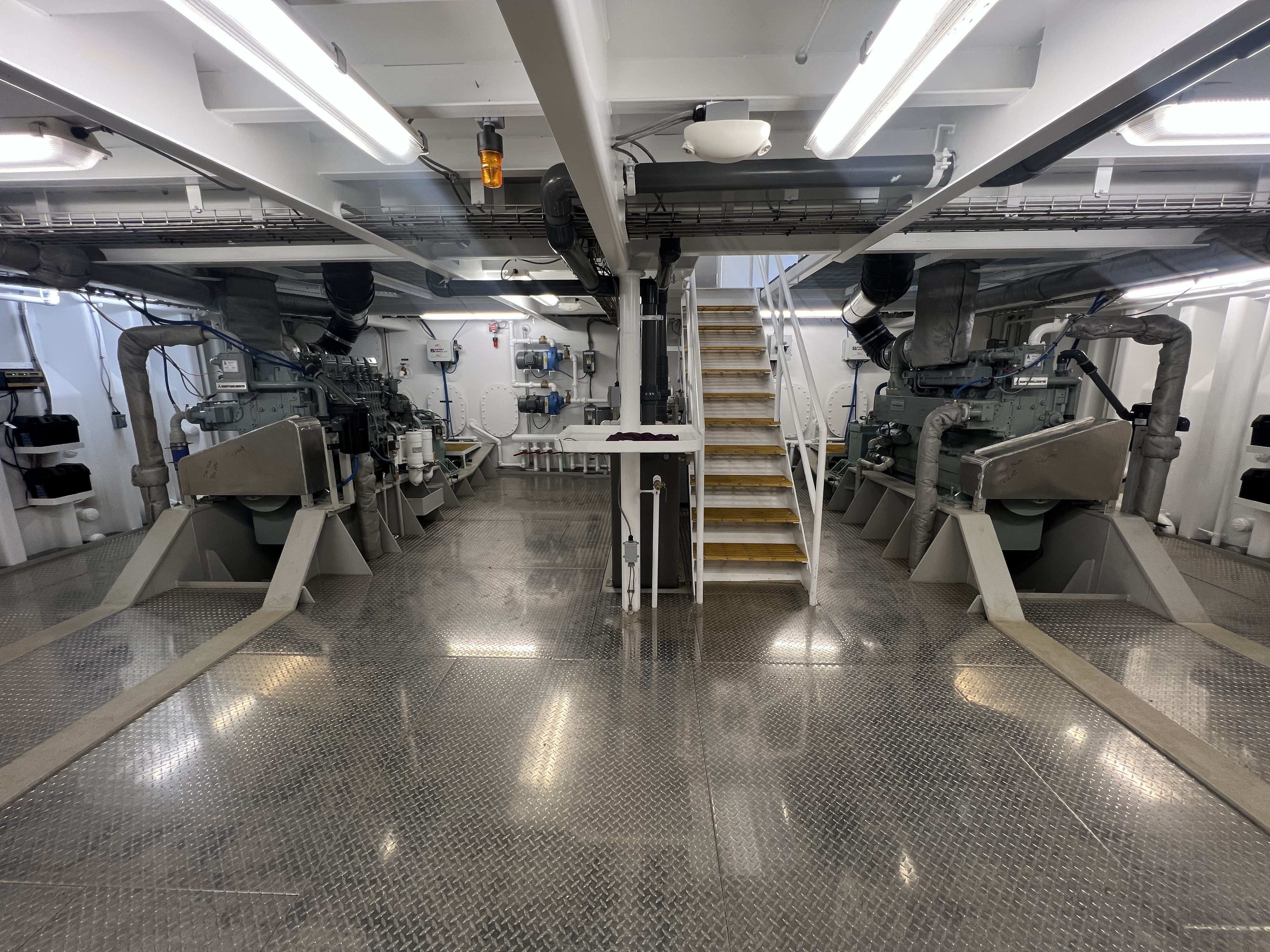By Trace Laborde, VP of Sales
Over the last decade I’ve witnessed firsthand the significant advancements and transformations within the specialized field of marine propulsion—all directly impacting the efficiency and sustainability of marine transportation.
Looking back on 2023, the journey through technological breakthroughs and adapting to evolving norms has been nothing short of remarkable. This exploration of the preceding year offers a comprehensive insight into the dynamic trends, the shifting regulatory landscape, and the intricate web of challenges and prospects shaping the future of the marine industry.
Breakthroughs in Marine Technology
The industry has experienced substantial technological advancements, primarily driven by the need for efficiency and sustainability. Renewable fuel engine technology is gaining popularity, offering flexibility in fuel usage in conventional diesel engines while ensuring environmental sustainability. Utilizing these fuels, diesel engines can operate on both standard low sulfur diesel as well as renewable fuels such as hydrotreated vegetable oil (HVO) or biodiesel (often referred to as FAME), both which help reduce lifecycle emissions.
Another major development is the rise of hybrid and fully electric propulsion systems. As the world shifts towards sustainable energy, electric motors and battery systems are becoming more powerful and efficient. The adoption of these systems is expected to increase, reshaping the landscape of the market.
With the “green revolution” among us, sustainable initiatives have become a critical component of engine manufacturing and development. The push for decarbonization has led to the creation of more fuel-efficient engines with lower emissions. What’s more, the use of advanced monitoring and state-of-the-art sensors is helping optimize engine performance and minimize its environmental impact.
Regulations significantly impact the engine room. Stricter emission standards are compelling manufacturers and distributors to innovate and adapt. The Environmental Protection Agency and International Maritime Organization's ambitious targets for reducing greenhouse gas emissions necessitate compliance with stringent standards.
This regulatory shift presents both challenges and opportunities. While it requires investment in new technologies and engine redesigning, it also paves the way for a new market for environmentally-friendly propulsion systems.
2023 Market Challenges and Opportunities: Parts and Service Availability in Recent Times
The maritime propulsion industry, like many others, faced a unique set of challenges and opportunities in the context of parts and service availability in recent years. This period has been marked by a shift in global supply chain dynamics, impacting various sectors significantly.
Turning Supply Chain Challenges Into Opportunities
Recent global events have led to significant disruptions in supply chains, affecting the availability of spare parts and maintenance personnel across industries. Businesses have had to adjust their maintenance strategies and ongoing projects due to these supply chain fluctuations.
The maritime sector has not been immune to these challenges. Vessel owners and operators have struggled to secure spare parts and coordinate maintenance services efficiently, all while managing costs effectively. These conditions have underscored the risks associated with heavy reliance on components sourced from specific regions, revealing vulnerabilities in the supply chain.
Despite these challenges, this period has also catalyzed opportunities for growth and innovation. Companies have adapted by modifying their strategies, including diversifying their supply sources. Some manufacturers, for instance, have successfully shifted their focus from one market segment to another to meet changing demand patterns.
The situation has sparked a renewed interest in mechanical engines, prized for their robustness and ease of maintenance. These engines, with their simpler designs, require fewer specialized parts than more complex systems. This simplicity translates to more straightforward maintenance, reducing the need for unique components and specialized service personnel. The inherent durability of mechanical engines also means fewer breakdowns and a lower demand for replacement parts, offering a practical solution to ongoing supply chain challenges.
In light of these recent shifts, there has been a growing recognition of the value of adaptable technologies like mechanical engines. By incorporating such resilient systems, businesses are better equipped to navigate the current landscape and prepare for future supply chain uncertainties.
Charting the Future of the Marine Engine Industry
Vessel owners and operators stand at a pivotal juncture, where excitement meets challenge. In this rapidly evolving market, the path forward hinges on staying abreast of emerging trends and agilely adapting to regulatory changes. The commitment to sustainable practices and the pursuit of innovative technologies are not just strategies for staying ahead—they are imperatives for thriving in this competitive landscape.
This transformative journey for the industry is marked by a confluence of advancements, regulatory shifts, and market dynamics. With a keen understanding of these elements, we are well-equipped to chart a course through these changing tides into 2024 and beyond. Our ability to effectively navigate this evolving terrain will define our success, enabling us to unlock new opportunities and pioneer progress in the world of maritime propulsion.

